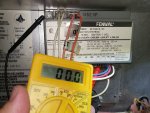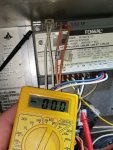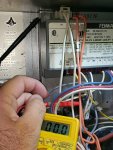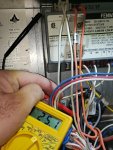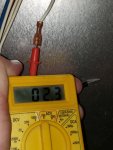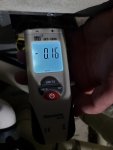swamprat69
Well-known member
If you are doubtful of your meter skills, probably the easiest way to troubleshoot is to first confirm that the wire to GND on the ignition control and case/cabinet ground are the same by setting the meter to ohms and measuring from that wire to a metal part of the cabinet. The meter should read zero ohms. Put the wire back on GND. If you have confirmed that the Igniton control GND and case/cabinet ground are the same , you can then keep one meter lead attached to case/cabinet ground by loosening one screw on the ignition control mounting plate ( such as ther upper left screw of the mounting plate ) and inserting one meter lead between the mounting plate and the metal heater cabinet and tightening screw to hold meter lead in place. Then set the meter to AC volts. Measure volts to the TH wire on the ignition control with the lead that is not attached to the cabinet. If you do not get 24Vac, you should then measure the voltage at both contacts on the blower/fan air pressure switch. One contact should be labeled C or common and one contact should be labeled NO or normally open. If you do not have 24Vac on the contact labled NO, then the air pressure switch is not closing the normally open contacts or you do not have 24Vac at the C or Common on the air pressure switch even though the fan/blower is running and we can troubleshoot for that problem. If you do not have 24Vac at the C or common connection, then an upstream safety in the circuit is open and you can backtrack through the safety circuit to identify the open safety.


